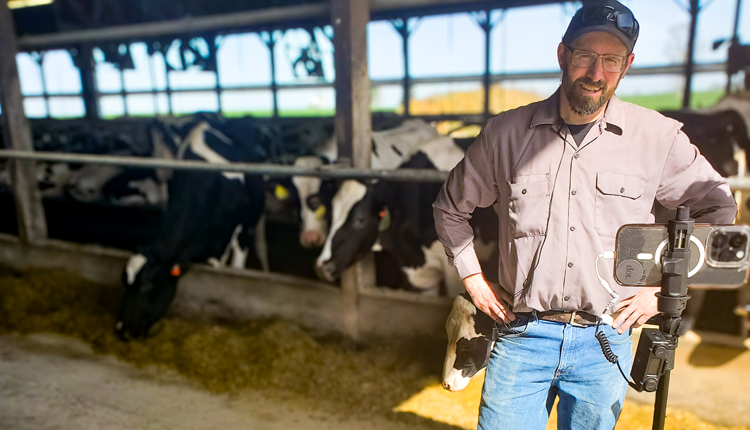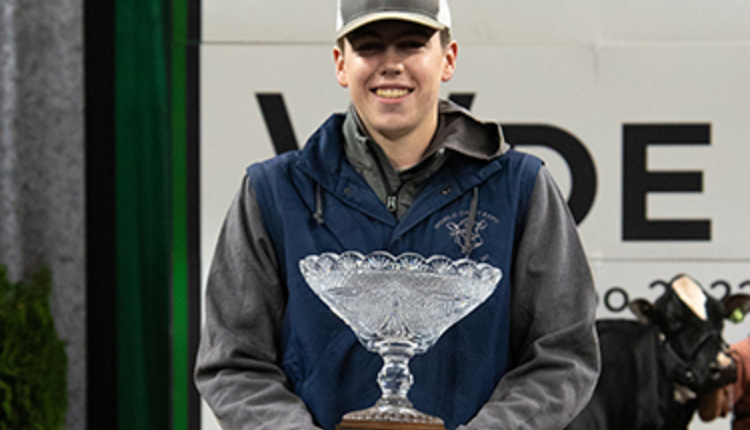 While genomics is new to Ayrshire breeders this April, and it has gradually made inroads in Brown Swiss circles, the DNA-based science has completely transformed how we mate and market Holsteins and Jerseys. Within a few short years, nonprogeny-tested bulls, what are now called "genomic" bulls, moved from their once stagnant one-quarter market share to swiftly passing the longtime leaders, sires with first-crop daughters. Given that collective vote of confidence, we reformatted our Hoard's Dairyman Bull List to include more comparisons on young genomic bulls to help all of us make better purchasing decisions.
While genomics is new to Ayrshire breeders this April, and it has gradually made inroads in Brown Swiss circles, the DNA-based science has completely transformed how we mate and market Holsteins and Jerseys. Within a few short years, nonprogeny-tested bulls, what are now called "genomic" bulls, moved from their once stagnant one-quarter market share to swiftly passing the longtime leaders, sires with first-crop daughters. Given that collective vote of confidence, we reformatted our Hoard's Dairyman Bull List to include more comparisons on young genomic bulls to help all of us make better purchasing decisions. In updating our bull list, we will continue to rank all seven breeds recognized by the Purebred Dairy Cattle Association (PDCA). However, we added genomic-only lists for all the previously ranked traits for Holsteins and Jerseys. Together, these two breeds accounted for 97.5 percent of the 362,000-plus genomic tests calculated among the four before-mentioned breeds. That same percentage matched Holsteins' and Jerseys' combined domestic semen sales among all dairy breeds last year, which supports the further expanded focus on these breeds.
In fact, compared to the same time last year, A.I. organizations are responding to the market demand. Last April, there were 1,319 progeny proven active bulls on the combined domestic and foreign lists compared to 1,098 young bulls with genomic only evaluations. One year later, that ratio flipped to favor genomic bulls. In all, there were 1,571 genomic bulls on the April 22013 active A.I. list compared to just 1,195 domestic and foreign progeny proven bulls. On a percentage basis, genomic bulls moved from 45 percent of all bulls in active line-ups to 57 percent. Click here to download the new bull list.
While we briefly considered merging the progeny-tested and genomic-only lists, we passed on the idea. We realize that both groups are compared on the same genetic base. However, fluctuations - mostly downward, we might add - as bulls move from genomic-only to a combination of genomic and progeny-tested data indicate we must still exercise some caution when comparing the two groups.
It is no different than the U.S. and Canadian dollar at the present time. While both are close in value, pennies and at times a few nickels still separate the conversion between the two legal North American tenders.
For Holstein breeders that have long-used service sire calving ease (SCE), you will notice it has a new look. Before discussing the change, let's revisit what the SCE trait measures. Service sire calving ease is the tendency of calves from a particular sire to be born more easily (or more difficult) than average calf. With that in mind, bulls are now ranked with a decimal point to give more detail as shown on the first page of the bull list. This decimal point allows breeders to know if a bull is closer to 4 or 5. In the past one wouldn't know the difference between a bull with a 3.6 SCE or 4.4 SCE. Both would have been labeled as a 4.
In this April's genetic evaluations, daughter calving ease also has a decimal place. However, we don't list that trait on our list.











